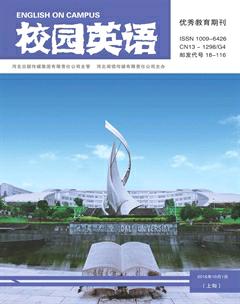The Analysis of Esther from the perspective of Pragmatics
【Abstract】There is a eponymous heroine of the biblical book of Esther, who rescued the Jewish nation from the calamity. The author analyses the dialogue between the king and Queen Esther from the perspective of the Pragmatics, in order to get a better understanding of her characterstics.
【Key words】Esther; Pragmatics; Cooperative Principle
1. Cooperative Principle and Implicature
Philosopher, Paul Grice (cited in WenXu, 2006), proposed that all speakers, regardless of their cultural background, adhere to a basic principle governing conversation which he termed the cooperative principle. That is, people assume that in a conversation the participants will cooperate with each other to make their contributions. Grice, then broke this principle down into four basic maxims which go towards making a speakers contribution as is required.
(1) Relevance: Make sure that whatever you say is relevant to the conversation at hand.
(2) Quality: Do not say what you believe to be false. Do not say that for which you lack adequate evidence.
(3) Quantity: Make your contribution sufficiently informative for the current purposes of the conversation. Do not make your contribution more informative than is necessary.
(4) Clarity: Do not make your contribution obscure, ambiguous or difficult to understand.
According to Grice, conversation implicature refers to a kind of extra meaning that is not literally contained in the utterance. It can arise from either strictly and directly observing or deliberately and openly flouting the maxims, that is to say, speakers can produce implicatures in two ways: observance and non-observance of the maxims.
2. The Analysis of dialogue between the king and Esther
Then the king asked, “ What is it, Queen Esther? What is your request? Even up to half the kingdom, it will be given you.” “If it pleases the king,” replied Esther, “Let the king, together with Haman, come today to a banquet I have prepared for him.”
…
As they were drinking wine, the king again asked Esther, “Now what is your petition? It will be given you. And what is your request? Even up to half the kingdom, it will be granted.” Esther replied, “My petition and my request is this: If the king regards me with favor and if it pleases the king to grant my petition and fulfill my request, let the king and Haman come tomorrow to the banquet I will prepare for them. Then I will answer the kings question.”
…
And as they were drinking wine on that second day, the king again asked, “Queen Esther, what is your petition? It will be given you. What is your request? Even up to half the kingdom, it will be granted. ” Then Queen Esther answered, “If I have found favor with you, O king, and if it pleases your majesty, grant me my life—this is my petition…” (quoted from the book of Esther in the bible)
From the dialogue above, we can find the words from the king are openly against the maxim of quantity, for he repeated his question three times. Literally speaking, it seems unnecessary to ask the same questions so much times. However, it is the repetition that reflects the kings curiosity and his affection to Queen Esther as well , or otherwise the king would not have such a kind of patience.
In addition, Queen Esthers answers also violates the maxim of quantity and quality, because she cannot truthfully provide more detailed information about her petition and request. In fact, her words have rich meanings. First of all, she wanted to arouse the kings interest in her, and then she could find favor with the king. What is more, it is a technique to delay her real purpose. She did not reveal the evil plan of Haman directly, not meaning her lack of courage, and on the contrary, it embodies her great wisdom, for she wanted to give more time to the king to accept the abrupt truth. Furthermore, she was waiting for god to perform magical power, which reflected her firm faith of god.
3. Conclusion
Her story is the origin of the celebration of Purim12 in Jewish tradition. She was a person of courage, greatness, faith and wisdom. Her grace and beauty gave her favor among all people that she came in contact with. She was an instrument used by god to effect gods salvation. The author applied the theory of Pragmatics to illustrate the dialogue between the king and Esther, which highlights the profile of Esther.
References:
[1]The Holy Bible:New International Version(C).Copyright 2006 by The Zondervan Corporation.
[2]黄锡木.主题汇析圣经(简化字版)[M].基道出版社,2005.
[3]圣经(简化字新标点和合本).中国基督教协会发行.
[4]文旭,刘润清.新编语言学教程[M].北京:外语教学与研究出版社,2006.
作者简介:柯燕萍(1988-),女,汉族,福建仙游人,研究生,讲师,毕业于西南大学外国语学院,就职于重庆幼儿师范高等专科学校,研究方向:语言学理论应用及实践。

